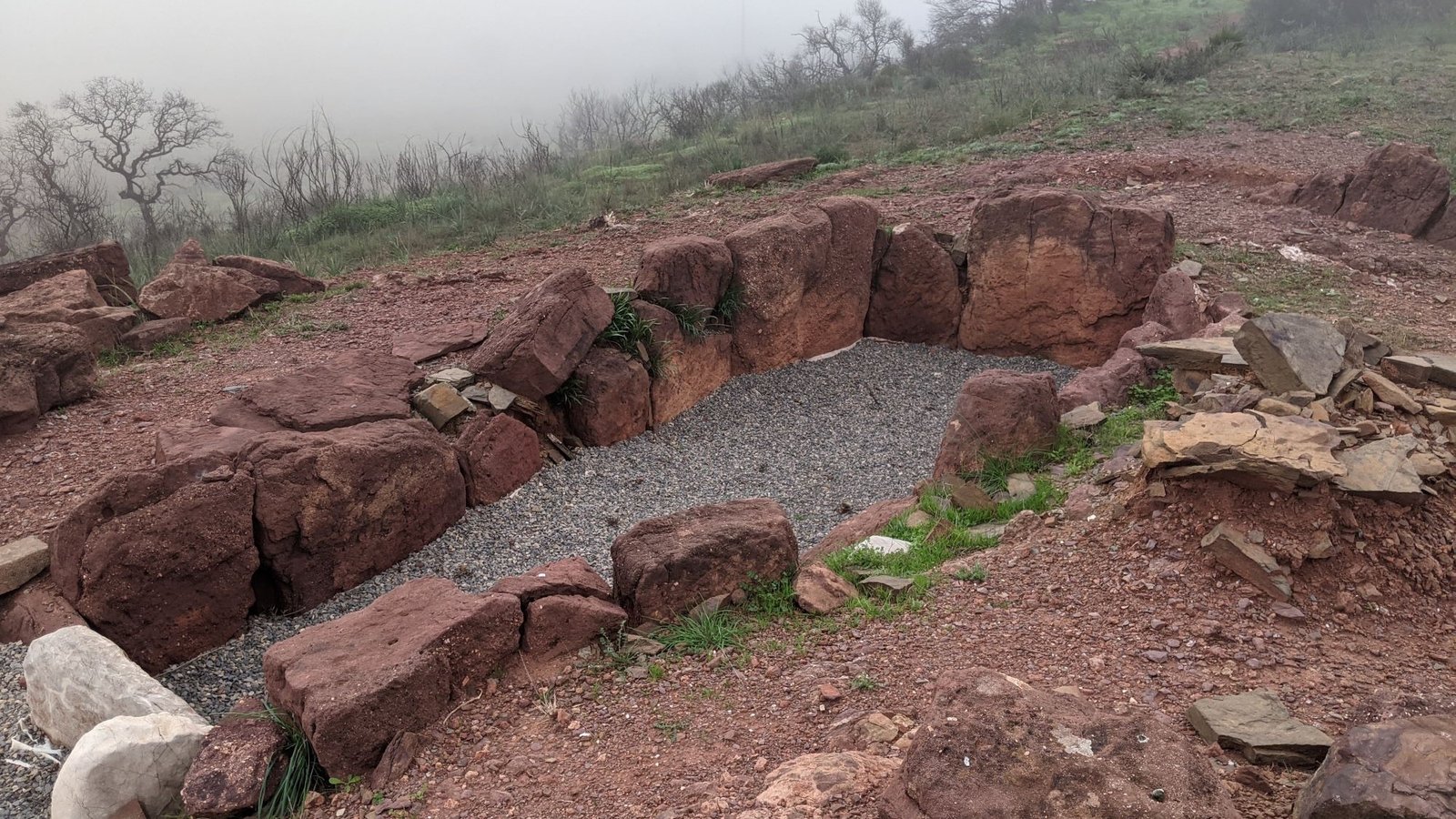Tomb of Santa Rita
The Algarve is known for its sunshine and beautiful beaches, but if you’re faced with a foggy Atlantic morning, it’s a perfect opportunity to pay a visit to the Megalithic Tomb of Santa Rita. The eerie silence, trees looming out of the fog, the sense of isolation …all lend themselves perfectly to the exploration of a prehistoric tomb.






This long and narrow (5m x 2m) chambered tomb was only discovered in 2001, and it is still being archaeologically investigated. (The chamber is filled with gravel while waiting for proper plans to preserve the site.) Made of red sandstone slabs, it’s a particularly beautiful dolmen. There is a white granite “door” at the entrance to the main chamber, contrasting quite interestingly with the rest of the construction. Evidence of use extends back over 4,500 years, with different remains through the Bronze and Iron Ages and even to the Roman period.
Location
The site is in the Algarve (Faro district), in the far south of Portugal. It’s in the eastern section (near Spain), in the municipality of Vila Real de Santo António. It’s located just outside the village of Santa Rita.
Access
From the edge of the village of Santa Rita, it’s a short walk to the tomb. You’ll need to use a GPS or follow your nose!
Signage

There’s no real signposting for the megalithic tomb. There is a sign in the village of Santa Rita indicating the turning for the “Primeiro Santuario da Nª Senhora de Sta. Rita” (which is a fountain from the 18th Century(?) marked a short way before the megalithic tomb). If you follow that sign, you can park at the end of the road and walk to the tomb. There is a signpost at the tomb site.
Links
- Register (in Portuguese) in the Archaeological Portal of the DIrectorate-General of Cultural Heritage
- Description (in Portuguese) by the CIty Council of Vila Real do Santo António
- A description (in Portuguese) by the Center for Investigation and Information of the Heritage of Cacela
- Register (in Portuguese) in the by the Director-General of Cultural Heritage (classification is in process)
Nearby
There had been other sites in the region, and the Antas of Nora and Marcela were identified in the 1800’s and declared National Monuments. Unfortunately, they haven’t survived. The remaining prehistoric sites in the Algarve are quite a ways inland. However, there is the enormous neolithic site of La Torre-La Janera recently discovered across the border near the Spanish city of Huelva.
